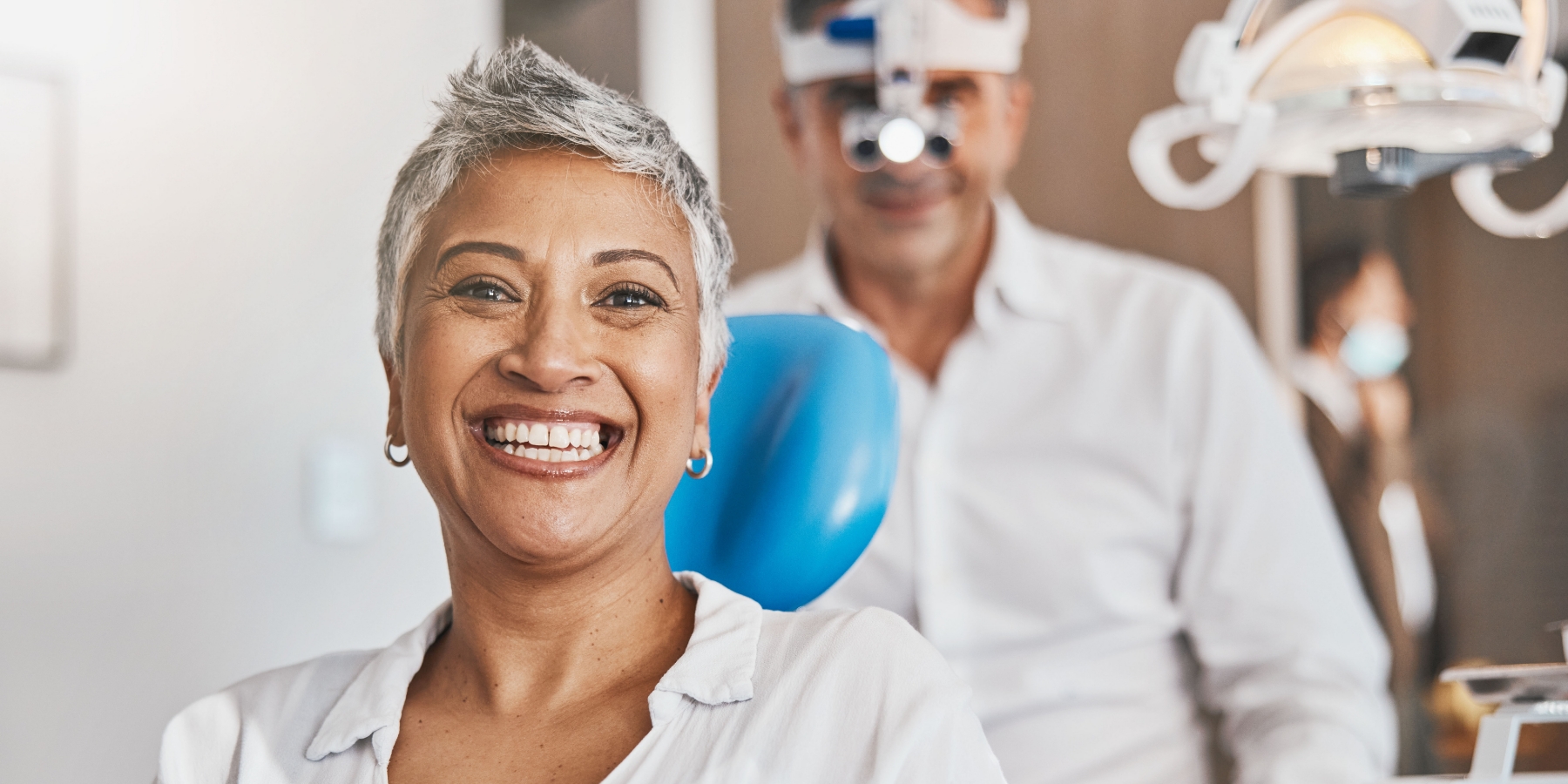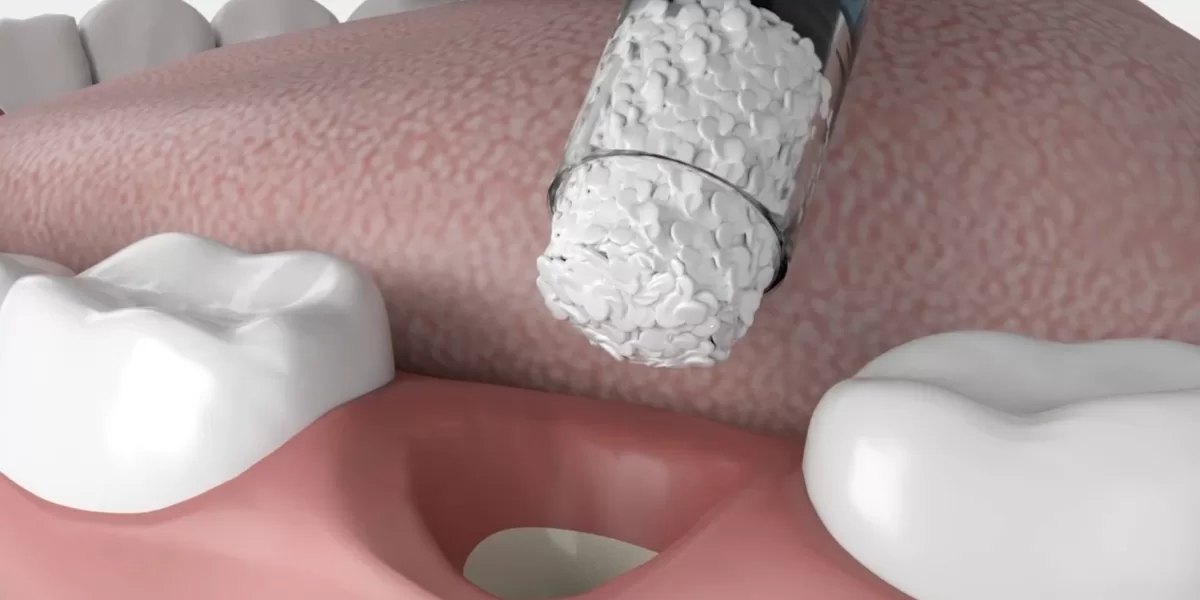
If you live in the Pasadena area and need dental implants due to tooth loss, it’s possible you will also need a bone graft. When teeth have been missing for a substantial amount of time, the jawbone begins to recede and deteriorate because there are no tooth roots to stimulate jawbone growth. Learn more about the bone graft procedure and different types of bone grafts available for dental implants.
What Is A Bone Graft?
When it comes to dental implants, our doctors will determine whether or not you will require a bone graft before they are able to place your implants. But many people don’t know what a bone graft actually is. To make sure your jawbone is strong enough to fuse to your dental implants, our doctors will take part of a bone from another area of your body, or use synthetic bone grafting material, and attach it to your jawbone. Your body will have to heal for several months once the graft has been placed. This bone grafting process helps men and women have a strong jawbone ready to receive dental implants.
Meet Board Certified Oral and Maxillofacial Surgeon, Dr. Christopher Chan
At Foothill Center for Dental Implants and Oral Surgery, exceptional patient care is our top priority. Dr. Christopher Chan, Board Certified in Oral and Maxillofacial Surgery, exemplifies this commitment. He is a fellow of the American Association of Oral and Maxillofacial Surgeons and a member of the California Association of Oral and Maxillofacial Surgeons, while maintaining active hospital privileges at Huntington Hospital.
His advanced specialty training and affiliations promote the highest standards of patient comfort, safety, and care. Following your procedure, you will receive Dr. Chan’s personal phone number for any questions or concerns. Our friendly and well-trained team will guide you through each step, making your experience as comfortable and stress-free as possible.
Bone Preservation and Augmentation
Many times due to progressive disease, infection or trauma, bone and soft tissues are lost in areas around the teeth. This process is accelerated when teeth are removed, and nothing is done to replace the stimulation that the tooth root provides to preserve the jawbone. This is extremely prevalent in the front of the upper jaw where bone loss and shrinking gum tissue can be seen when we smile.
Placement of dental implants prevents the defect that would normally develop when teeth are missing. There are also techniques to replace bone and gum tissue in areas where it has been lost. Depending on the size of the defect, and the location within the mouth, this can be done easily in the office, often at the same time as placement of dental implants.
Types of Bone Grafts
There are several different types of bone grafts available for Pasadena residents. These include:
Autograft Bone Graft
During this type of bone graft, Dr. Chan will remove bone from the body of their patient’s own body, typically from the chin or hard palate. When men and women don’t have adequate bone available from those areas of the body, our doctors may elect to take bone from the hip or shin. The benefit of an autograft is the low risk of bone graft rejection since the bone is coming from the patient’s own body. On the other hand, this type of bone graft means that Dr. Chan will have to create an incision on another area of the body.
Allograft Bone Graft
Alllograft bone grafts are harvested from deceased donors. Before placing an allograft, our doctors will verify that the donor was free of any diseases or infections before the bone was harvested. This donor bone will also have to go through meticulous treatments to make it compatible with their Pasadena patient. The main concern with using this type of bone graft for dental implants is the risk of an immune reaction or rejection.
Xenograft Bone Graft
Sometimes our doctors, or their patients, choose a xenograft bone graft when preparing for dental implants. This type of bone graft is taken from an animal – usually a cow or pig – and is processed so that much of what is left is made up of mineral components. Xenografts add amazing support to the site of the dental implants, and as the mouth and jaw heal over time, the body replaces the xenograft with new bone.
Alloplast Bone Graft
Another option for Pasadena men and women who are preparing for dental implants is the alloplast bone graft. This graft is either man-made or created from natural sources such as minerals. Benefits of alloplasts include the lack of risk for disease or infection from the graft and the acceleration of bone formation.
Dental Implants in Pasadena: Invest in a Smile that Lasts
We know the thought of having dental implants placed is daunting enough, let alone adding to it the possibility of needing a bone graft, but trust us, the process is worth it. Ensuring your jawbone is strong enough to receive and hold your dental implants is foundational to implant success. If you’re ready to discuss dental implants, call our Pasadena office today at (626) 792-3161.


